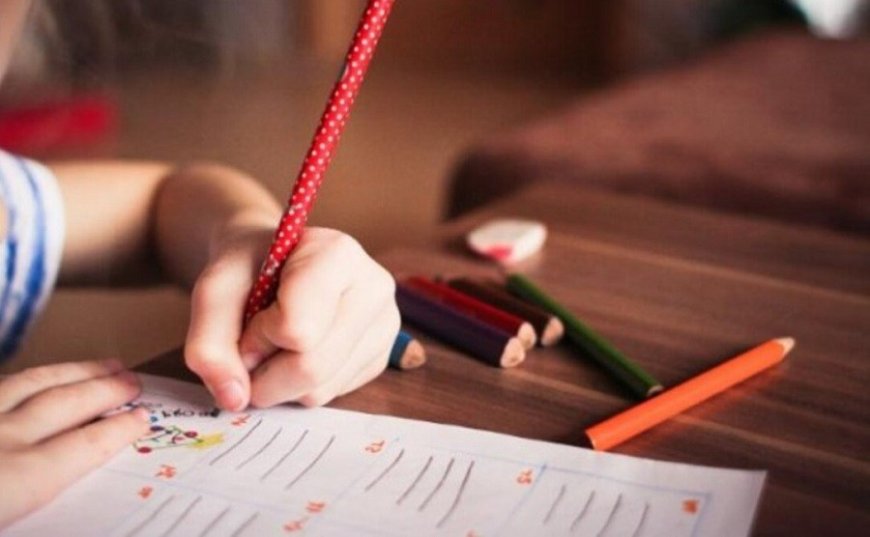What a teacher needs to know about dysgraphia
Review of the causes and manifestations of dysgraphia, recommend a convenient online tool for effective diagnosis of this problem at an early

What a teacher needs to know about dysgraphia
Review of the causes and manifestations of dysgraphia, recommend a convenient online tool for effective diagnosis of this problem at an early stage.
Are there children among your students who make not just blots, but mistakes that do not lend themselves to any logical explanation? The handwriting of these students, as a rule, does not differ in calligraphy, letters of different sizes, lines are uneven, and the number of errors is innumerable. And in terms of intelligence, they often do not lag behind their peers, but at the same time learn poorly.
Why does this happen and what is the cause of the problem? And, most importantly, how to help such a child overcome the problem called "dysgraphia"?
Manifestations of dysgraphia
Dysgraphia is a disorder of the writing process associated with an insufficient level of formation of mental functions involved in the implementation and control of written speech. As a rule, dysgraphia is a concomitant manifestation of dyslexia. Children with this problem have difficulty learning the material, although their intellectual abilities are mostly fully preserved.
Causes of dysgraphia
- Hereditary predisposition. Dysgraphia in a child is organic in nature, due to the peculiarity of the arrangement of certain parts of the brain that are genetically transmitted from parent to child.
- Injuries and diseases. The cause of dysgraphia can be an intrauterine infection, difficult childbirth at the birth of such a child or transferred diseases that have affected the development of the brain. In this case, along with the corrective work is medical treatment.
- Socio-psychological factors. Dysgraphia can be caused by a lack of parental attention, lack of close language contact, bilingualism in the family, cultural background, and more.
Speech disorders are a serious problem, but if they are not hereditary, they can be overcome in a year or two of systematic corrective work. To do this, you must first determine the causes of dysgraphia in a particular child, and determine the type of disorder. To do this, it is appropriate to involve appropriate specialists - speech therapist, speech pathologist, psychologist or psychiatrist.
The main types of dysgraphia
Acoustic dysgraphia. With this disorder, the child has difficulty with auditory differentiation of sounds, although she pronounces the words correctly. This is manifested in the replacement of letters when writing.
Articulation-acoustic dysgraphia. This type of disorder is a sound substitution in oral speeches, which, accordingly, are reproduced in writing.
Grammatical dysgraphia. This type of dysgraphia is manifested in the inconsistency of words in the sentence when writing. This is due to the immaturity of the child's grammatical systems of word formation.
Optical dysgraphia. Difficulties in the child's assimilation of visual images of letters, many of which are perceived as similar (not writing letters, "mirror" image of letters, or replacing those with similar elements, etc.).
Dysgraphia due to the lack of analysis and synthesis of speech flow. Manifestations of this type are the inability to separate individual words in speech and then divide them into letters and sounds, as well as omissions or insertion of additional letters, their permutation or division of the word into separate parts.
Diagnosis of dysgraphia online
It is possible to diagnose the presence of dysgraphia either with the involvement of specialists or with the use of a special modern Russian-language online tool Dysgraphia. Dysgraphia correction service. It can be used to automatically detect the presence of writing disorders in children aged 6 to 14, even in the early stages of manifestation.
Methods of detecting and correcting dysgraphia have been developed by specialists in speech therapy, psychology, psychiatry and defectology. The results of the diagnosis can be the basis for further corrective work with relevant specialists.
Resource "Dysgraphia. Dysgraphia Correction Service was created as part of the project, which will gather a database of exercises for each type of disorder. The project was presented in 2017 and won the hackathon, receiving support from the Greenhouse of Social Technologies.
In order to be diagnosed after pre-registration on the site, you must perform 7 blocks of different tasks to detect each type of dysgraphia.
Interactive diagnostics includes the following blocks:
- Word formation - singular / plural (16 questions);
- Composing a sentence from the proposed words in the indefinite form (6 sentences);
- Word formation - completion (13 tasks);
- Opening parentheses, writing words together or separately (6 tasks);
- Composing words from anagrams (4 tasks);
- Filling in the missing letters in the word (6 tasks);
- Reproduction of written text by ear after listening to the corresponding recording.
According to the results of online diagnostics, when disorders are detected, the type of dysgraphia is differentiated, the degree of its manifestation is determined and recommendations for further corrective work with specialists are provided.
The presence of dysgraphia can be a problem that will affect the entire future life of today's student, and can be solved in a few years. And it depends on the indifference of adults, whether the child will be able to overcome this problem and how it will affect the formation of her personality in the future!
